We greatly hope that you will enjoy reading this article about 3 Blatantly Beautiful Bumblebees. It’s also our fervent hope that, in doing so, you also find yourself eager to learn of other, related creatures. We hope you find yourself eager to learn of more species.
Obviously, these few species presented here represent only a tiny fraction of the bumblebee species around the globe. Currently, entomologists recognize a total of 255 varieties. We feel, though, that these few serve as a good examples of their many amazing natural qualities.
Red-Tailed Bumblebee
Red-Tailed Bumblebee Facts
- Leading off this article about 3 Blatantly Beautiful Bumblebees comes the distinctly-colored species appropriately known as the Red-Tailed Bumblebee.
- This beautiful insect quite understandably goes by the simple, but informative, common name. Its official scientific name, meanwhile, remains much more difficult for most to pronounce. That’s because it’s the known to scientists as Bombus lapidarius.
- Regardless of the term one uses for it, however, it’s a lovely and fascinating member of the Bombus Genus. It’s also a locally important species. The first official recognition of the remarkable invertebrate, furthermore, occurred in the year 1758.
- This acknowledgement of it as a separate species took place as a result of the efforts of an individual well known in the annals of entomology. More specifically, the renowned Swedish botanist and zoologist Carl Linnaeus made the original identification.
- Most fortunately, the amazing Red-Tailed Bumblebee appears to be maintaining a sizeable and stable population base. Moreover, this tendency further seems to hold true throughout the entirety of its natural habitat range. That’s a rarity today.
- The IUCN therefore presently has no listing for it on the organizations Red List of Threatened Species. That fortunate status nonetheless remains at some risk, however. This holds true due to various factors, many of them shared by countless other species.
- For one, it does appear to be declining in numbers in some agricultural areas. Due to this, it’s now considered Near Threatened in specific portions of its range. Its greatest potential threat, though, undoubtedly consists of the ongoing threat of climate change.
Red-Tailed Bumblebee Physical Description
The gorgeous Red-Tailed Bumblebee, in fact, bears a striking resemblance to yet another variety of bumblebee sharing its range. This fact frequently makes identifying the correct species difficult for any but the most highly trained and experienced observer.
The fabulous arthropod also displays a moderately strong degree of the physiological trait of sexual dimorphism. In its particular case, this characteristic manifests itself in terms of both color and size. Males of the species tend to be slightly smaller than females.
It further displays this gender-based difference in terms of patterns of color. More precisely, however, the males of this awesome insect present three bands of yellow, one at the base of the abdomen, and two on the thorax. It additionally has the standard red tail
Females of the insect, including the queen usually present a slightly different appearance. Firstly, these lack any of the yellow bands. Secondly, this gender of the invertebrate displays a more extensive red-colored section, covering roughly half the abdomen.
Males of the Red-Tailed Bumblebee attain an average overall body length of between 0.55-0.63 in (14-16 mm). The females, meanwhile, develop in a slightly greater size range. These average between 0.43-0.63 in (11-16 mm) in length. Both have an average-sized proboscis.
- Kingdom: Animalia
- Phylum: Arthropoda
- Class: Insecta
- Order: Hymenoptera
- Family: Apidae
- Genus: Bombus
- Species: B. lapidarius
Red-Tailed Bumblebee Distribution, Habitat, and Ecology
There’s very fortunate news for those who appreciate the beauty of Nature. That’s due to the fact that the Red-Tailed Bumblebee evolved as native to a relatively broad swathe of the world. More specifically, it remains native to a particular portion of the continent of Europe.
With further precision, in this region population concentrations appear throughout the entire region. The creature does, however, appear in greater concentrations in certain areas. These include the countries of Greece, Britain, Sweden, Finland, and Germany.
Sadly though, in Ireland its numbers seem to be declining rapidly. Wherever the insect lives, however, it proves itself to be highly adaptable in terms of where it makes its home. That’s because population groupings manifest in several different habitat types.
These locations even include such public regions as gardens and parks. It most commonly chooses to live in areas consisting of very open terrain. Unlike some varieties of related species, though, it generally avoids living in areas of moderate to heavy forestation.
The Red-Tailed Bumblebee makes its appearance in the summer, between June and August. Being social insects, like many Hymenoptera, all members of the hive work together. In its case, there’s little hierarchy among workers, just between them and the queen.
Most types of bumblebees generally stay close to their hive when foraging. This one, however, tends to roam relatively great distances in search of food. Some individuals, in fact, venture as much as 5,741 ft (1,750 m) from the hive. For its kind, that’s a long distance.
The hives themselves, meanwhile, appear in various types of locations. In this it’s an opportunistic species. Locations for nests include such unexpected areas as under large stones or fallen logs. Colonies remains small, though, rarely exceeding 200-300 individuals.
Bombus dahlbomii
Bombus dahlbomii Facts
- Next up among our choices for inclusion in this compedium of 3 Blatantly Beautiful Bumblebees comes the astonishing Bombus dahlbomii.
- This magnificent creation of Nature bears the somewhat cumbersome name for a good, though surprising, reason. Unusually, the insect currently has no common name. Due to that rare, though not unknown, fact, it’s referred to only by the scientific name.
- The first known official recognition of the amazing arthropod as a separate and distinct species occurred in 1835. The startling invertebrate further received that name at the hands of the respected French entomologist, Félix Édouard Guérin-Méneville.
- Quite unfortunately, though, the creature now finds itself in great danger of extinction. This seems to occur due to a specific combination of several factors. Not surprisingly, given this situation, the IUCN now lists the fabulous arthropod as Endangered.
- Originally, its known population numbers began to drastically decline following the introduction of two invasive species to its native range. Somewhat surprisingly, though, both of those introduced species are actually other types of bumblebee.
- Following that, however, the population of the intriguing bee species experienced a devastating event. This occurred due to a particularly effective pathogen. One of the two invasive bumblebee species, it seems, also introduced this microorganism.
- These separate events combined to wreak havoc with the population of the Bombus dahlbomii. But the dangers it faces don’t end there, though. It now faces the combined threats of habitat loss and the escalating effects wrought by climate change.
Bombus dahlbomii Physical Description
The predominant coloring of the Bombus dahlbomii remains quite striking. That’s because it primarily displays a reddish-orange color. But its abdomen typically shows a somewhat lighter shade of the same hue. The wing, leg, and head area, however, show black.
Much like related bees, that abdomen also has a rounded tip to it. It further has comparatively short antennae. The majority of the remarkable body even body has a dense covering of relatively long bristles. It therefore has a quite furry appearance.
The sheer size of this remarkable insect, though, easily remains its most notable characteristic, hence the nickname. This holds true because mature queens measure an astonishing 1.6 in (4 cm) in total length, which is an enormous measurement for its kind.
Due to these measurements, the magnificent Bombus dahlbomii easily ranks as one of the largest bees known to man. Due to its great size, along with its appearance, it has unique nickname, however. Some people in its range refer to individuals as flying mice.
- Kingdom: Animalia
- Phylum: Arthropoda
- Class: Insecta
- Order: Hymenoptera
- Family: Apidae
- Genus: Bombus
- Species: B. dahlbomii
Bombus dahlbomii Distribution, Habitat, and Ecology
Most unfortunately, it appears that the marvelous Bombus dahlbomii only evolved as native to a somewhat restricted portion of the globe. That’s due to the fact that this remarkable work of evolution’s only presently known in parts of the Southern Hemisphere.
More specifically, however, that native zone of habitation seems to be limited to a small portion of the continent of South America. Even there, though, it’s range remains limited. Due to this, it lives only in Patagonia, in the southern sections of Argentina and Chile.
Even within that limited area, however, the fascinating bee only inhabits a specific environment. That further consists of the many temperate forests in the region. That’s due to the fact that it remains highly dependent on the flowering plants of the region.
Like many related invertebrates, the fascinating Bombus dahlbomii also lives as a colonial insect. The colonies of this particular insect, however, rarely become as large as some others. Typically, in fact, these colonies consist of one queen and roughly 100 workers.
Just as other types of bee, this fascinating species also feeds on the nectar and pollen of various plants. This species, though, prefers to keep its foraging patterns small, which does set it apart somewhat. It only forages long distances when local resources are scarce.
Golden Northern Bumblebee
Golden Northern Bumblebee Facts
- Closing out this compendium of 3 Blatantly Beautiful Bumblebees comes the majestic beauty undertandably known as the Golden Northern Bumblebee.
- The perfectly descriptive term for this marvelous invertebrate serves as the common name for a particularly beautiful variety of bumblebee. This highly fascinating small invertebrate also bears the distinctive scientific name of the Bombus fervidus.
- By either name, though, the creature remains an impressive species. Fascinatingly, within its native range, it remains an important pollinator. The natural wonder also represents on of the very first in its zone of habitation to be scientifically identified.
- This occurred through the efforts of the well-known Danish zoologist Johan Christian Fabricius, in 1798. The marvelous insect also displays some quite fascinating behavioral patterns. This even includes a communication system based on dancing.
- This incredible product of evolution also developed a highly specialized nest defense strategies for different categories of intruders. When intrusions into the nest occur, it covers the intruder with honey to hamper its movement.
- Like many species of bees, the population of the Golden Northern Honeybee appears to be declining rapidly. The IUCN currently lists it as Vulnerable, as a result. This listing appears on the organization’s Red List of Threatened Species.
- This highly lamentable decline appears to be occurring due to a variety of factors. While these include habitat loss, it’s also threatened by the ongoing and escalating effects of climate change, much like many other species around the world.
Golden Northern Bumblebee Physical Description
The wonder of the Golden Northern Bumblebee does not extend to size. In fact, it constitutes a small variety of bumblebee. Sexual dimorphism plays a factor as well. Female workers reach 0.75 in (1.9 cm) in length, while male drones only average 0.5 in (1.3 cm).
This small but truly beautiful example of its kind also displays the sex-based characteristic in another way. The wingspan also appears to be gender-related in this particular arthropod. That particular manifestation of the principle sets it apart from others.
Firstly, a female’s wings most commonly measure approximately 1.6 in (40 mm) in overall span. Secondly, however, that of the males only averages a measurement of 0.86 in (22 cm). This represents a quite significant difference for a species of its size.
It’s also well known for its dazzling appearance, which never fails to please the eye. Its coloring appears as a combination of black and golden yellow. In yet another gender-based difference, though, the male typically displays more yellow than the female.
In other respects, individuals of both genders appear remarkably similar. The body of both grows covered with numerous short, but thick, hairs. The amazing Golden Northern Bumblebee also distinguishes itself from the smaller honeybee in an important way.
You see, unlike the tinier honeybee, this remarkable species does not die after inflicting a sting. In point of fact, the impressive invertebrate remains capable of repeatedly attacking an opponent with its stinger. This rarely forms a danger to humans, however.
- Kingdom: Animalia
- Phylum: Arthropoda
- Class: Insecta
- Order: Hymenopterta
- Family: Apidae
- Genus: Bombus
- Species: B. fervidus
Golden Northern Bumblebee Distribution, Habitat, and Ecology
The serenely beautiful Golden Northern Bumblebee developed as endemic to only a specific section of the globe, like many bees. More specifically, however, that region consists of somewhat limited and restricted portions of the continent of North America.
To be even more precise, its populations primarily concentrate in scattered portions of that continent. The fascinating arthropod most commonly appears in the northeast portion of the United States, where it distinguishes itself from competing species.
The marvelous arthropod does exhibit very restrictive habitat preferences, regrettably. This insect generally prefers to construct its nest in either tall grasslands or temperate savannas. Yet it also often adapts to inhabit farms and even cities with sufficient greenery.
The nests of this particular bee occur either underground or above, and commonly consist of a loose mass of grass held together with avian feces. Further, adult specimens of the Golden Northern Bumblebee feed entirely on the nectar of flowering plants.
In contrast, the young of the species are fed pollen collected by the workers. Nest populations also generally remain quite small. Amazingly, that number rarely exceeds sixty adults and pupae. Lifespans range from 34 days for workers to 12 months for the queen.
3 Blatantly Beautiful Bumblebees
We sincerely hope that you have thoroughly enjoyed reading, and hopefully learning from, this article about 3 Blatantly Beautiful Bumblebees. We certainly enjoyed creating it for you, our readers. Creatures such as these perfectly represent the resourcefulness of Nature.
Lamentably, however, many of their fellow insects, along with countless species of all kinds around the world, now find themselves imperiled. They face dangers such as habitat loss and climate change. It’s up to us to do all we can to protect and preserve them all.
Check out our other articles on 3 Bewildering New Guinea Birds, 6 Mysterious Natural Phenomena, The Mighty Tornado, Fabulous Herbaceous Plants Named After Animals
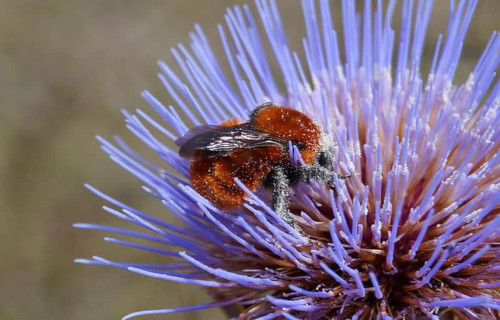
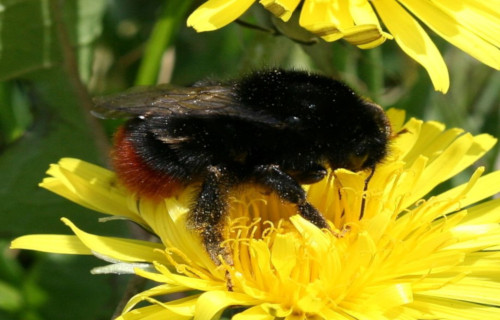
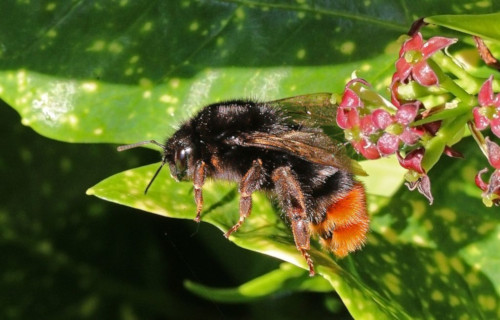
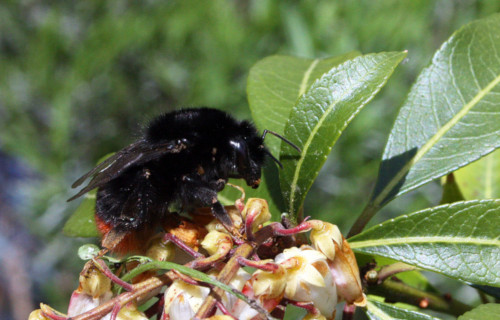



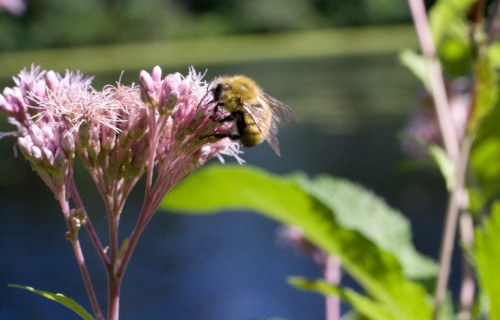










Leave a Reply